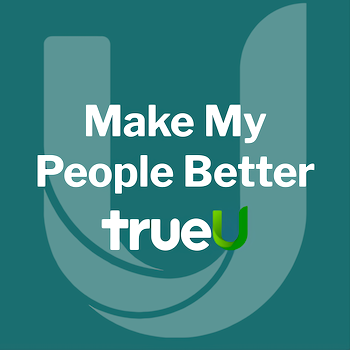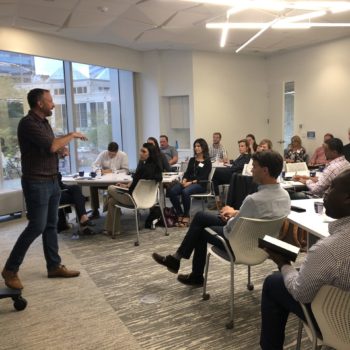Working with sophisticated organizations to help solve their most difficult problems, we recognize that we must remain at the forefront of innovative problem solving. To serve our clients well, Resultant team members continually refine their abilities to analyze an issue and develop creative solutions to address it. Design Thinking is one way we accomplish this.
What Is Design Thinking?
We all recognize great design or innovative ideas when we see them. The iPhone or iPad, Tesla cars, or the KitchenAid Stand Mixer might come to mind. Each of these products harnesses innovation and creativity to serve a unique need.
Of course, everyone wishes for the creativity and talent required to achieve “the next great thing,” but most of us believe these skills are beyond our reach. Fortunately, this simply isn’t true. By leveraging the powers of empathy, iteration, a variety of perspectives, not to mention a willingness to embrace purposeful failures as a way to learn, everyone can be creative. Combine these efforts with a methodology honed by the greatest problem solvers in the world and we can all become great innovators.
Design Thinking is, in its simplest form, a process of creating new and innovative ideas that can be applied across skill sets, experiences, and business questions. It is both a problem-solving philosophy and methodology, providing a framework within which all can be creative. Formalized by David Kelley, the founder of IDEO and the head of the Hasso-Plattner Institute of Design at Stanford University in California, the concept focuses on determining underlying needs and developing the most innovative ways to address those needs effectively.
Applying Design Thinking
Resultant has embraced the concept of Design Thinking across our organization. Leaders within our team have undergone professional training at Stanford University and brought their knowledge and expertise back to Resultant by facilitating workshops for our entire team. Every employee within our organization works through the five core Design Thinking concepts: empathy, problem definition, ideation, prototyping, and testing. Over time, Resultant has used a combination of lecture and guided hands-on activities to develop a keen understanding of the methodology and ingrain it into our culture.
Our belief in the Design Thinking methodology doesn’t stop there. Design Thinking has affected our internal processes and our approach to clients’ challenges. Continually applying a methodology that fosters creativity allows our team the ability to consistently achieve it, instead of relying on serendipitous creative inspiration that isn’t always available by a deadline.
To continually refine our Design Thinking skills, our team has begun executing Design Thinking workshops for our clients to support more effective collaboration around problem-solving.
Through our partnerships in the public, not-for-profit, and private sectors, Resultant is working to address many business and community challenges. Our employees and clients appreciate that the Design Thinking methodology stretches our creative range to drive solutions to these challenges.
Learn more about Design Thinking or reach out to our team to see how they can assist your organization leverage this innovative problem-solving methodology.
Share:







